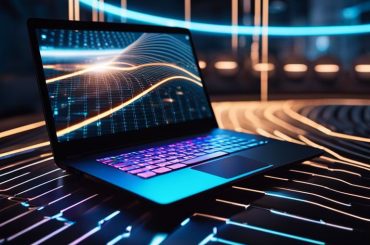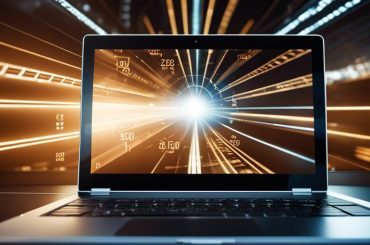In today’s fast-paced digital world, having a high-performing laptop is essential for staying productive and efficient. However, many users are unaware of the advanced techniques that can be utilized to significantly improve their laptop’s performance. In this comprehensive guide, we will explore 10 advanced techniques that will unleash the power of your laptop and ensure that it is running at its peak performance. From optimizing system settings to upgrading hardware components, these techniques will help you take your laptop’s performance to the next level. Whether you are a professional who relies on their laptop for work or a casual user looking to improve your overall computing experience, these advanced techniques are sure to make a difference. So, let’s dive in and unleash the full potential of your laptop!
Types of Performance Enhancements
To maximize the performance of your laptop, there are various types of enhancements that can be made. These improvements fall under two main categories – hardware upgrades and software optimizations. Recognizing the different types of enhancements available will help you determine the best course of action to take in order to unleash the full potential of your laptop.
Hardware Upgrades
Any laptop can benefit from hardware upgrades to boost its performance. Whether it’s adding more RAM, upgrading the processor, or replacing the hard drive with a solid-state drive (SSD), these physical changes can significantly improve the speed and efficiency of your laptop.
Software Optimizations
For laptop users seeking to enhance performance without investing in hardware upgrades, software optimizations offer an alternative solution. By optimizing the operating system, removing unnecessary startup programs, and regularly updating software, you can improve the overall performance of your laptop. It is important to note that software optimizations can complement hardware upgrades for a well-rounded enhancement approach.
Tips for Maintaining Peak Performance
Obviously, improving the performance of your laptop is only one part of the equation. To truly unleash the power of your machine, you need to make sure that it stays at peak performance levels over time. This requires regular maintenance and monitoring to ensure that everything is running smoothly.
After all, what good is using advanced techniques to improve performance if you don’t maintain that level of performance?
Regular Maintenance Best Practices
The key to maintaining peak performance on your laptop is to regularly perform routine maintenance tasks. This includes things like cleaning out dust and debris from the cooling system, updating software and drivers, and running regular virus scans to ensure that your system is free of malware.
The proper care and maintenance of your laptop will not only help to keep it running efficiently, but also extend its lifespan, saving you money in the long run.
Monitoring Software for Performance Management
Management software plays a crucial role in maintaining the performance of your laptop. By utilizing software to monitor system resources, temperatures, and overall performance, you can identify potential issues before they become major problems.
Monitoring your laptop’s performance with the right software can provide valuable insights and help you make informed decisions about how to improve its overall efficiency and speed.
Step-by-Step Performance Improvement Techniques
Despite the advancements in technology, a laptop’s performance can deteriorate over time. This chapter will provide a step-by-step guide to achieving optimal performance through advanced techniques.
Any efficient performance improvement begins with streamlining the startup and shutdown procedures to ensure that system resources are utilized effectively. By optimizing resource allocation and usage, the laptop’s performance can be greatly enhanced.
Streamlining Startup and Shutdown Procedures
Any efficient performance improvement begins with streamlining the startup and shutdown procedures. By minimizing the number of programs that automatically launch during startup, system resources can be conserved and allocated more efficiently. Similarly, closing unnecessary programs and processes during shutdown can prevent resource wastage and improve overall system performance.
Optimizing Resource Allocation and Usage
The key to optimal performance lies in optimally allocating and utilizing system resources. The effective management of CPU, memory, and disk usage can significantly enhance the laptop’s performance. By prioritizing critical processes and limiting background operations, the system can operate more efficiently and responsively. Additionally, optimizing resource usage can extend the laptop’s battery life and reduce power consumption, resulting in a more sustainable and productive computing experience.
Improvement in laptop performance can be achieved by optimizing resource allocation and usage, prioritizing critical processes, and minimizing background operations, thereby enhancing system efficiency and responsiveness.
Factors Affecting Laptop Performance
Now, before diving into the advanced techniques to improve laptop performance, it is crucial to understand the various factors that can affect the overall speed and efficiency of your device. These factors can be categorized as external and internal, and recognizing their impact is the first step in optimizing your laptop’s performance. Thou, by addressing these factors, you can unleash the full power of your device.
External Factors and How to Mitigate Them
On the external front, factors such as ambient temperature, dust and debris, and power source fluctuations can significantly impact your laptop’s performance. To mitigate these issues, consider the following:
- Keep your laptop in a cool, well-ventilated environment
- Regularly clean the vents and fan to remove dust and debris
- Use a stable and reliable power source
Recognizing the influence of these external factors and taking proactive steps to address them can ensure a more consistent and efficient performance from your laptop.
Internal Factors and How to Address Them
Them internally, factors such as insufficient memory, outdated hardware, and excessive background processes can hamper your laptop’s speed and responsiveness. To address these internal issues, consider the following:
- Upgrade your RAM for better multitasking capabilities
- Replace outdated hardware components, such as the hard drive or CPU
- Regularly monitor and close unnecessary background processes
Thou, by addressing these internal factors, you can significantly improve your laptop’s overall performance and efficiency.
Any improvements you make to mitigate these issues will contribute to the overall speed and efficiency of your laptop, allowing you to unleash its full potential. Keywords: laptop performance, speed, efficiency, optimize, factors, external, internal, mitigate, address, recognize, influence, memory, hardware, background processes, multitasking.
Pros and Cons of Performance Enhancement Methods
Keep in mind that when considering performance enhancement methods for your laptop, there are both advantages and disadvantages to each approach. It’s important to weigh these carefully before making any decisions. Below, we have outlined the pros and cons of common performance enhancement methods in a clear and concise format for easy comparison.
| Method | Pros and Cons |
| RAM Upgrade | Pros: Improved multitasking and overall system performance. Cons: Cost and compatibility issues. |
| SSD Installation | Pros: Faster boot times and application loading. Cons: Higher cost per GB compared to HDD. |
| CPU Overclocking | Pros: Increased processing power for demanding tasks. Cons: Potential for overheating and reduced lifespan. |
| Cooling Pad | Pros: Better thermal management for improved stability. Cons: Added bulk and potential noise. |
| Software Optimization | Pros: Free and easy to implement. Cons: Limited impact on hardware limitations. |
Evaluating the Benefits of Performance Upgrades
For those considering a performance upgrade for their laptop, it’s important to carefully evaluate the potential benefits. A RAM upgrade, for example, can significantly improve multitasking capabilities and overall system responsiveness, while an SSD installation can drastically reduce boot times and application loading. However, it’s crucial to ensure that the cost of these upgrades aligns with the expected performance gains, and that the hardware is compatible with the laptop.
Considering the Downsides and Risks
Prospective performance enhancement methods also come with potential downsides and risks that must be considered. While CPU overclocking can deliver increased processing power, it also carries the risk of overheating and reduced lifespan of the processor. Similarly, while a cooling pad can improve thermal management, it may also add bulk and introduce noise to the laptop’s setup. It’s important to carefully weigh these drawbacks against the desired performance improvements.
Considering the potential drawbacks and risks involved in performance enhancement methods is crucial for making informed decisions about improving your laptop’s performance. By carefully evaluating the benefits and weighing them against the downsides, you can make the best choice for your specific needs and budget, ensuring that any enhancements made result in lasting and effective improvements.
Unleash The Power – 10 Advanced Techniques To Improve Laptop Performance
Ultimately, implementing the advanced techniques outlined in this guide will significantly enhance the performance of your laptop. By optimizing system settings, managing applications, and maintaining your hardware, you can ensure that your computer operates at its full potential. Additionally, utilizing advanced troubleshooting methods and software can help identify and eliminate performance bottlenecks. With these strategies, you can unleash the power of your laptop and enjoy a faster, more efficient computing experience.





